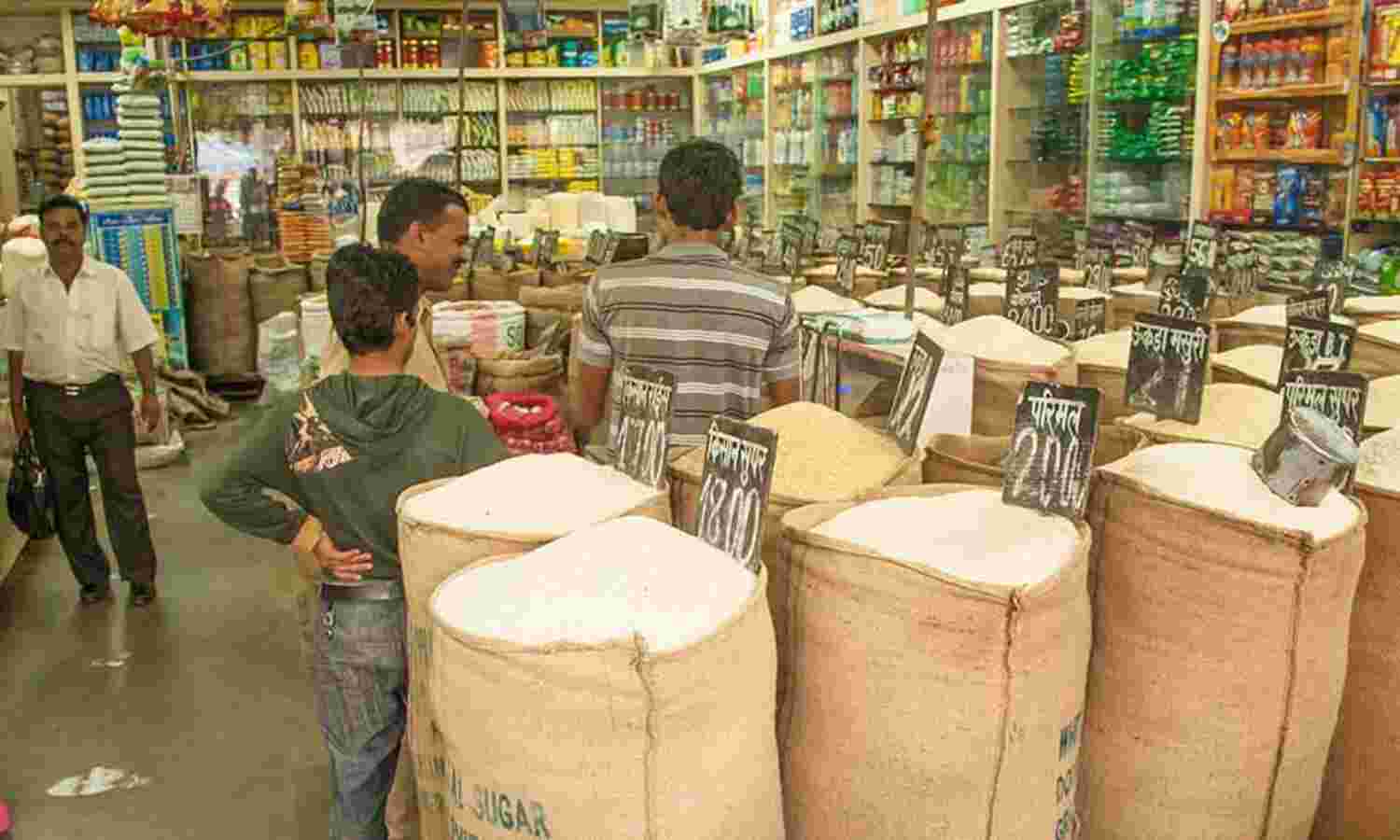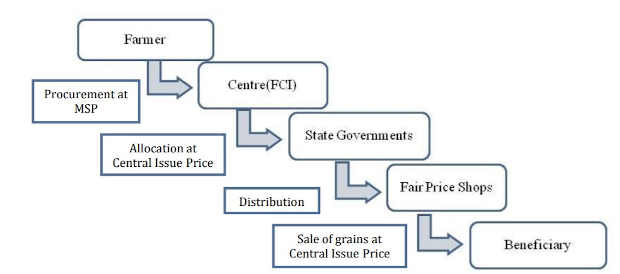Logistics, Tech Challenges May Hamper Centre’s One Nation-One Ration Card Roll-Out

New Delhi: The Centre’s One Nation-One Ration Card (ONORC) scheme, which came into partial effect on January 1, 2020, could run into hurdles if implemented without an overhaul of three critical factors, according to an analysis of the problems with the existing Public Distribution System (PDS) and insights from researchers. The three factors are storage and distribution infrastructure, updation of data systems, and inter-state coordination.
Announced in June 2019, the ONORC scheme is now active in 12 states--Haryana, Rajasthan, Madhya Pradesh, Gujarat, Maharashtra, Jharkhand, Tripura, Andhra Pradesh, Telangana, Goa, Karnataka, and Kerala--said Minister for Consumer Affairs, Food and Public Distribution Ram Vilas Paswan. The scheme is scheduled to come into effect across all the other states by June 30, 2020.
The PDS manages storage, allocation, and distribution of foodgrains across India. It does this through a network of Food Corporation of India (FCI) warehouses, state-owned warehouses, private godowns and about 533,000 Fair Price Shops (FPS) across the country. In 2017-18, it allocated 55.2 million tonnes of foodgrain to states, according to a 2019 Ministry of Statistics and Programme Implementation report; offtake by states for the same period was 54.04 million tonnes. Under the existing Targeted Public Distribution System (TPDS) regime, poor families are entitled to subsidised foodgrain. They receive this upon furnishing a ration card (an entitlement document) at a specified FPS tied to their place of residence.
This mechanism does not permit beneficiaries to collect subsidised grain at any other outlet, thereby leaving them with no access to their entitlement when they move out of their district and state. This framework implies that the PDS potentially excludes at least 54.26 million inter-state migrants from accessing subsidised grain, as per migrant data from the 2011 Census.

Under the existing system, migrants cannot become beneficiaries under the last step as their mobility renders them ineligible to procure grain from fair price shops.(Source: PRS)
This compromised food access for migrants is reiterated by research and consultancy agency India Migration Now’s Interstate Migrant Policy Index (IMPEX); in an evaluation of seven states in 2018, the agency found that only Maharashtra had the provision of a temporary ration card for migrants, specifically targeted at beedi (thin cigarette of tobacco in tendu leaves) workers and abandoned women.
The ONORC aims to address this problem by making ration cards portable under the National Food Security Act, allowing for their use at any FPS across the country. “This will benefit migrant workers, labourers and daily wagers, who change their place of dwelling in search of employment,” said food secretary Ravi Kant. “Such ration cardholders, through biometric authentication, will be able to buy food grain entitled to their families from any fair price shop in any state or Union territory using the same.”
Storage and distribution
The PDS suffers from flaws in storage and distribution. Leakage of grains and rotting due to faulty storage is common within PDS networks, according to a 2013 analysis by PRS Legislative Research, a non-profit, independent research institute. Of the total allocation of 47.6 million tonnes of grain in 2009-10 (as per then-latest National Sample Survey data available), 42.4 million tonnes were lifted by states and 25.3 million tonnes were actually consumed. This implies a leakage of 40.4% of all foodgrain under the PDS network, according to the report.
The Centre-appointed Shanta Kumar Committee, set up in August 2014 to evaluate the role of FCI, also noted leakages as high as 70% in some states and recommended full computerisation of the system to ensure efficient distribution. Another study, published by the South Asia Institute at Heidelberg University in 2016, found that the system was most susceptible to corrupt practices during the storage and distribution stages. Spurious practices included the willful diversion of foodgrain stock, sale in the open market by corrupt intermediaries, and external diversion of above poverty line-quota foodgrain.
In addition, the PDS suffers from poor network management and its “main weakness, i.e. not reaching the poor effectively stems from the universality of PDS coverage”--that is, universal access to ration cards instead of more targeted interventions, according to an analysis by the Food and Agriculture Organisation.
Digitisation and Aadhaar seeding
For ONORC to be successful, it will have to weed out beneficiary inclusion and exclusion errors, which are now widely prevalent in the system, as pointed out by NITI Aayog’s 2016 evaluation of the PDS. Exclusion errors, the government’s policy think-tank noted, were highest for marginalised groups, signalling that vulnerable families were potentially being excluded from the benefits of the system. This necessarily means weeding out duplicate ration cards and ensuring that FPS managers maintain accurate records.
The ONORC facility would be “available after biometric/ Aadhaar authentication on Electronic Point of Sale (ePoS) devices,'' said Paswan. This points to two necessary modernisation measures: linking of ration cards with Aadhaar (a biometric-based, unique 12-digit number for residents) and availability of ePoS devices at FPS outlets across the country.
At the beneficiary end, ONORC hinges on automation of--and the availability of functional ePoS devices at--533,000 FPS across the country. As of February 2019, 388,000 of 533,000, or 72%, have an ePoS device each, as per a reply by the then Minister of State for Consumer Affairs, Food and Public Distribution C R Chaudhary in the Lok Sabha. Even as all fair price shops in some states--Gujarat, Maharashtra, Telangana, Andhra Pradesh--are automated, this coverage is unlikely to meet the June 2020 target in the northeastern states. In Meghalaya, only 10 of 4,736 FPS have an ePOS. In Assam, 109 of over 38,000 shops are equipped with an ePOS. In the states of Mizoram, Nagaland, and Manipur, none of the 5,625 FPS have ePoS devices.
This is also the case in the capital city of Delhi, where none of the 2,254 FPS have an ePoS device, as per information in Chaudhary’s Lok Sabha reply. Even in West Bengal, a large state with navigable terrain, only 309 FPS outlets have been automated out of a total of 20,806.
The data show that ePoS are unevenly spread out across the country, with a few states disproportionately behind the rest. This highlights the difficulty of bringing automation in remote areas in difficult terrain. The lack of automation in the northeast hints at a relatively poor implementation of ONORC in the region.
The second modernisation roadblock is the linking of a beneficiary’s Aadhaar with his/her ration cards. A little more than 85% of ration cards are linked with Aadhaar (for at least one family member) to facilitate biometric authentication, according to a February 2019 response in the Lok Sabha by Minister of State for Consumer Affairs, Food and Public Distribution D R Dadarao. The linking of Aadhaar with ration cards had facilitated the deletion of 29.8 million ineligible ration cards between 2013 and 2018, the response noted, pointing out that several cards were invalid for multiple reasons, such as duplication, detection of ineligible families, transfer or migration.
Linking Aadhaar with ration cards for authentication has frequently led to the denial of rations for beneficiaries, as has been widely reported in Chhattisgarh and Odisha. The failure rate for Aadhaar-authenticated PDS transactions stood at 2.5% for Andhra Pradesh, with regional variations, according to a 2017 study by the Indian School of Business’s Digital identity Research Initiative. The leading cause of the failure was ‘biometric mismatch’ when the system fails to identify the beneficiary biometrically.
Given that ePoS availability and Aadhaar linkage are prerequisites for the ONORC scheme, the data suggest an implementation gap that requires addressal before the June 30, 2020 deadline.
Inter-state coordination
Under the National Food Security Act, grains are allocated by the Centre to states and beneficiaries are identified by states to set procurement requirements. States follow different regimes: Tamil Nadu follows a universal public distribution system while Haryana’s Targeted Public Distribution System follows Central guidelines, dividing beneficiaries between Antyodaya Anna Yojana (AAY, or the poorest of the poor) and Priority households.
A harmonisation of these systems to ensure that migrants benefit from a specified offtake will be key to ensuring an effective ONORC implementation. States will additionally have to ensure distribution and transport mechanisms are up to date.
One unaddressed problem is the need to make distribution and allocation flexible. Food requirements will change as people move from one state to another for better education or employment prospects. The food distribution system will require flexibility to respond to sudden changes in the number of beneficiaries across state boundaries. Other patterns of migration will also put pressure on state distribution systems. For instance, distress migration from Odisha will put the onus on receiving states to ensure access to subsidised grains.
One-time allocations, as is currently the case, are unlikely to cover for outcomes from mass migration events induced by climate change or natural disasters. At 2.68 million, India had the highest number of people displaced by disasters and extreme weather events in the world in 2018. In the case of such events, displaced persons will seek subsidised foodgrain at destination states, requiring these states to remain flexible with their allocations and distribution.
Other obstacles
India’s PDS is plagued by accessibility issues wherein gender, caste and class play a role in access to food, wrote Mamata Pradhan of Cornell University and Devesh Roy of the International Food Policy Research Institute. While the ONORC scheme effectively democratises the distribution network and ostensibly shifts agency and choice towards the beneficiary, the same barriers to access cannot be allowed to continue, according to the scholars. If they do, the “agency shift” towards the beneficiary loses its value.
Pradhan and Roy also pointed out that to be truly transformational, ONORC will have to make provision for the ‘divisibility’ of rations. Divisibility refers to the ability of members of one family under the same ration card to pick up their ration allocations at physically separate locations, and the ability of the system to accommodate for this distributed offtake.
“Unless the government brings in ‘divisibility’ of the ration card, it might be challenging to keep track of the migration pattern,” Roy and Pradhan wrote. “Experiences show that implementation is a demanding process and the deadline seems highly unlikely to be met in a way that it is in practice effective. Notwithstanding that, ambitious targets have their own value. Even if one rolls out and functions well it will have learning to offer and the system will mature sooner than later.”
(Srinivasan is a researcher with India Migration Now; Editing by Marisha Karwa.)
We welcome feedback. Please write to respond@indiaspend.org. We reserve the right to edit responses for language and grammar.


